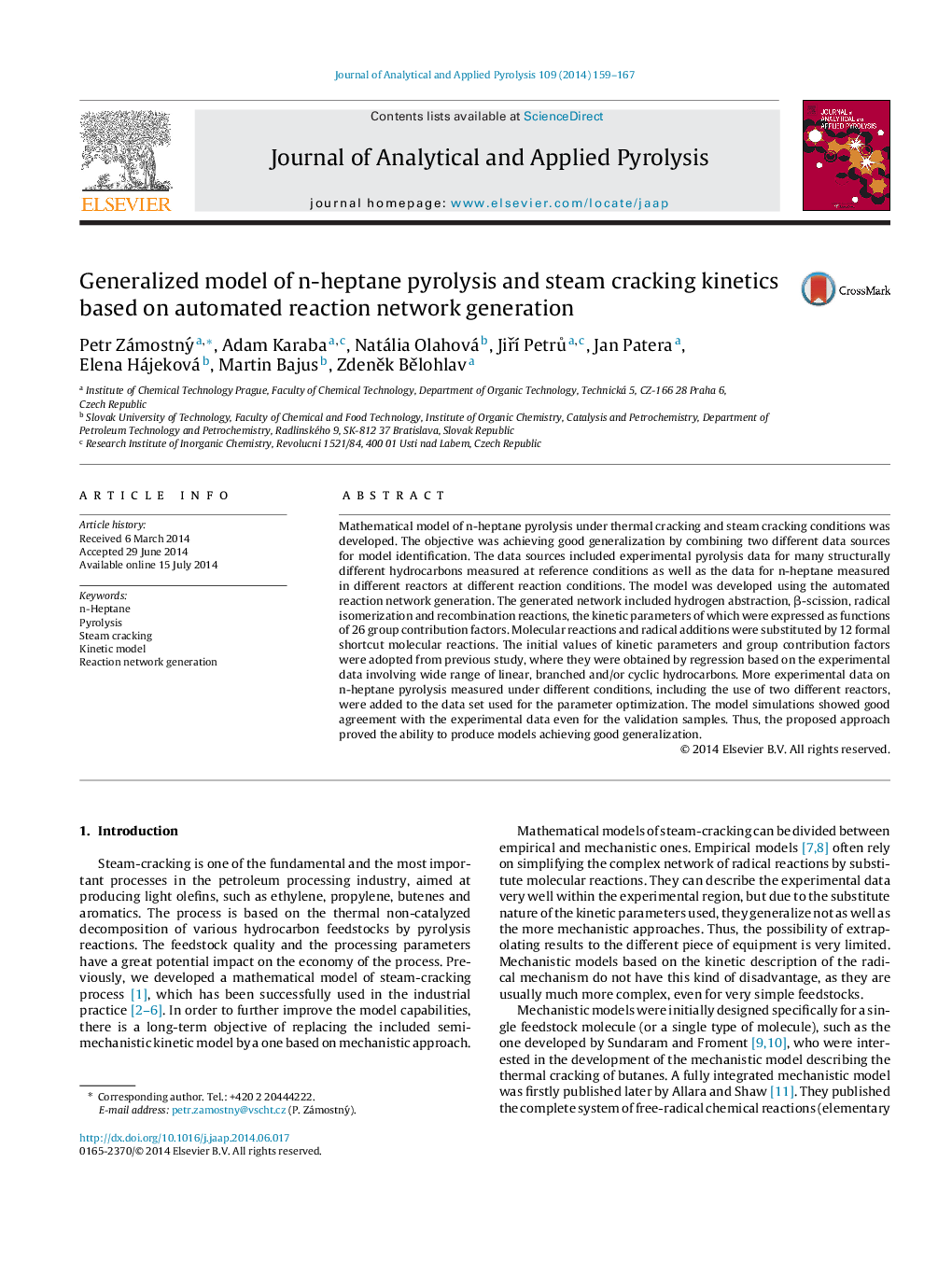| Article ID | Journal | Published Year | Pages | File Type |
|---|---|---|---|---|
| 7606907 | Journal of Analytical and Applied Pyrolysis | 2014 | 9 Pages |
Abstract
Mathematical model of n-heptane pyrolysis under thermal cracking and steam cracking conditions was developed. The objective was achieving good generalization by combining two different data sources for model identification. The data sources included experimental pyrolysis data for many structurally different hydrocarbons measured at reference conditions as well as the data for n-heptane measured in different reactors at different reaction conditions. The model was developed using the automated reaction network generation. The generated network included hydrogen abstraction, β-scission, radical isomerization and recombination reactions, the kinetic parameters of which were expressed as functions of 26 group contribution factors. Molecular reactions and radical additions were substituted by 12 formal shortcut molecular reactions. The initial values of kinetic parameters and group contribution factors were adopted from previous study, where they were obtained by regression based on the experimental data involving wide range of linear, branched and/or cyclic hydrocarbons. More experimental data on n-heptane pyrolysis measured under different conditions, including the use of two different reactors, were added to the data set used for the parameter optimization. The model simulations showed good agreement with the experimental data even for the validation samples. Thus, the proposed approach proved the ability to produce models achieving good generalization.
Related Topics
Physical Sciences and Engineering
Chemistry
Analytical Chemistry
Authors
Petr Zámostný, Adam Karaba, Natália Olahová, JiÅà Petrů, Jan Patera, Elena Hájeková, Martin Bajus, ZdenÄk BÄlohlav,
